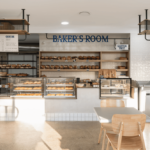Downsizing to a Home Office? Here’s What to Consider
After the year we’ve had, there’s a number of reasons why you might be downsizing from an office to a home office – and many people are in the same shoes.
But regardless of why, ensure that when you’re downsizing your office you’re creating an inspiring and productive home office.
Here’s the key things to consider:
What do you actually need?
We accumulate a lot of ‘stuff’, particularly in the office. Rather than just migrating everything from your office to home office, think about what you actually need.
“You’re working with less space, so you want to be ruthless” directs Stuart Organ from Total Fitouts Perth. “Make a list of items and appliances you can’t work or live without – as in your business wouldn’t run effectively without them – and another list of ‘nice to haves’. The ‘can’t live without’ list acts as a good starting point.”
Needed items include:
- Comfortable ergonomic chair/s
- Desk or workstation
- Printing and scanning requirements
- Equipment needed for your business
Additional things to consider:
- Do you need storage space – or can you go digital?
- Do you need filing cabinets or shelves?
- Do you need ‘production’ space?
Where will your workspace be?
Selecting your workspace is important. You may be fortunate enough to have an extra room – guest room, play room, study – or you might need to get creative.
Some out-of-the-box workspace solutions:
- Fold out or pull out work stations
- Convert a cupboard into a work area
- Empty corners where you could fit a custom desk
- Turn an awkward space into a workstation (small rooms, under stairs, hallways nooks)
- Repurpose underused space
- Garage or attic space (just make sure you have some natural light or air!)
Custom fitting to your existing space based on what you need is a great solution if the move to a home office is permanent or long term.
When deciding where your workspace will be, also think about where you will meet with clients or team members so you can pick an appropriate space.
How will you separate work and home life?
A place away from the rest of the home or a space that can be ‘shut down’ at the end of the work day is best. If you can, choose a spot away from the main living areas as it helps create a ‘border’ between your work and your home life.
When downsizing to a home office, it’s important to consider how you’ll switch off at the end of the day. It can be harder than you think when the kitchen is only a few steps away, so you ‘just keep working on that brief/emails/document.’
Create some type of barrier. If you can’t close a physical door or fold away your desk, find another way that signals to your brain that the work day is over.
How can you create an ergonomic space?
While using your laptop on the couch – or in bed – is tempting, it is not a long term solution.
You need to ensure you maintain all the key ergonomic principles in your home office, such as:
- Working in neutral postures at a proper height to keep the body in alignment
- Keeping things in reach and avoid unneeded strain and excessive motions
- Minimising pressure points
- Maintaining a comfortable environment
- Regularly move, exercise and stretch
Do you have the right technology and connections?
In this digital world, many of us are able to work anywhere and stay connected. Before you set up your home office, consider your connectivity requirements:
- Internet – there is nothing more frustrating than glitchy Zoom meetings so ensure that you have a good connection from your chosen space
- Does your phone work clearly from your location?
- Does your wireless technology all work?
- Printing and scanning needs
Will you be able to stay motivated?
Once the novelty of being able to roll out of bed at any time has worn off, it can be hard to motivate yourself at home.
Think about what inspires you and keeps you motivated at the office – is it a special poster? Team meetings? Breakout spaces? Your favourite cafe?
When you work from a quiet home office, you often end up having less breaks – no one stops by your desk to chat, you don’t pop out for lunch, etc – meaning you’re switched on for longer. Ensure you continue to take breaks throughout the day.
Need help fitting out your home office? Get in touch with your local Total Fitouts team.





